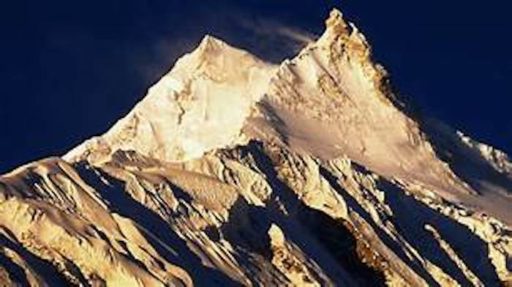I am alive. I am learning how to die. What have I got to lose?
One day, I will lose my early morning low-tide walk on Isle of Palms, South Carolina. I will lose my annotated copy of Man’s Quest for God: Studies in Prayer and Symbolism by Abraham Joshua Heschel. I will lose my popcorn, and my jealousies (their house, their travels), and my wife’s smile that loosens knots in the chest, and my step-daughter’s compassion, and my other step-daughter’s fashion, and my son’s loving companionship.
My, my, my.
“Whatever we associate with me,” Yongey Mingyur Rinpoche writes in In Love with the World: A Monk’s Journey through the Bardos of Living and Dying, “or claim as mine, will indicate the most intense bonds.” These are the very bonds that secure me in this world, the bonds that will, finally, be broken, the bonds I fear losing.
In “One Art,” Elizabeth Bishop progresses through a series of losses, from least to most personally significant: door keys, wasted time, age-related memory loss—names, places—beloved houses, cities, rivers, continents. The hardest loss comes in the villanelle’s final stanza.
—Even losing you (the joking voice, a gesture
I love) I shan’t have lied. It’s evident
the art of losing’s not too hard to master
though it may look like (Write it!) like disaster.
We hear her resistance to admitting to the pain caused by this loss (of a partner or two, of parents) in this most intimate moment of the poem. Though the poem is about mastering the “art of losing,” its form itself, with its repeating lines, with small but significant variations, fights against loss.
“[T]hings come that will perish, to be seen or heard / A while, like the coating of frost or the movement / Of wind, and then no more,” Mark Strand writes in his poem “Orpheus Alone.” “All things must pass,” sings George Harrison, “none of life’s strings can last.”
Don’t let go!
Things like this will perish: my step-daughter, a family doc, massaging my aged father’s bare, arthritic feet in her hands. (I would never touch them! I couldn’t even bear to look at them!) I was there. I witnessed it. Now, it’s a comforting memory, a memory that defines, in part, for me my step-daughter. For her, compassion comes as effortlessly and authentically as one breath after another. Right now, the memory evokes in me tenderness, gratitude, and love—feelings that I would like to hold onto. There’s sadness, too. Gone, the event. Gone, my father. Will be gone, the memory itself, my memory, by which I am bound to this life.
One of Mingyur Rinpoche’s “most intense bonds” is to Mount Manaslu, the Himalayan peak (it’s the eighth highest mountain in the world) above his village in Nubri, Nepal. “Its grandeur had always affirmed that it housed the gods,” he recalls. At the age of 36, on a quest to discover his essential identity, he gave up everything—the monastery he served as abbot, his attendants, students, shelter, food—and embarked on a three-year wandering retreat. He slept outdoors. He begged for food. Now, camped out near the Buddha’s Cremation Stupa, he is gravely ill, suffering from “stabbing stomach spasms, mosquitoes, vomiting, diarrhea, and the lethargy that must have come from severe dehydration.” He believes is dying. So, he recalls Tibetan instructions for dying, one of which is a Tibetan mandala practice, a practice of letting go of one’s deepest attachments. For him, remembering Mount Manaslu is the first step. The memory is both attractive and aversive. He recalls, “the sensory pleasures that I had received from the mountain, how when I had feasted my eyes on it, I had felt my heart soar.” Remembering this mountain of his childhood offers “solace” to his “sick body.” These first memories lead to others—of his grandmother who had died long ago, and of his boyhood in Nubri which also “had died many years ago.” Rather than try to protect himself from the sadness, nostalgia, and fear—he’s afraid of his own death—brought on by these memories, he takes note of the feelings and “let[s] them be.”
Similar to “One Art,” this Tibetan mandala practice also follows a sequence. It begins with letting go, letting be, offering or giving away “phenomena that are impersonal and inconceivable”—such as mountains or rivers. It then moves on to attachments to wealth, which in Mingyur Rinpoche’s case was not monetary wealth but the “treasure” of dharma. For that, he would need, finally, to remove his monk’s robes, which he had resisted doing for the first couple of weeks of his wandering retreat. He is, after all, committed to shedding identities by which he was known, and by which he had known himself, for his entire life: monk, son, brother, uncle, Buddhist, meditation teacher, tulku (the reincarnation of a spiritual adept), abbot, author; Tibetan Nepali; human being. For the final step of the formal practice, he had to offer his body. “I recalled doing this exercise when I had been healthy. It was so much easier when I did not accept that I would die.”
My body: a scar from my sternum to my groin. A month after I turned thirty, I lay on a gurney outside the operating room at what was then Women’s College of Pennsylvania. Before I was wheeled down from my room, a nurse injected me with morphine. When the head nurse of the operating room, a friend of my mother’s, came by to check on me before I was taken in for bilateral femoral-aorta bypass surgery, she took one look at me and said, You’re totally awake! Didn’t they give anything to you upstairs? Relax, let the medicine work! I fought the morphine! I was terrified of giving up control of my body.
Let the medicine work. The disease is not loss, not impermanence. All things will pass. The dis-ease comes from fighting this truth. Medicine: form. Forms of poetry and meditation practice. These forms—whether they are received, fixed forms such as a villanelle and the formal structure of a Tibetan mandala practice or more open forms—offer a stable position from which to observe the rising and passing of all phenomena. Their medicinal power helps me accept that truth.
Prayer offers that to me, too. In daily morning prayers, Jews praise the Divine who in its goodness renews creation every day. Though we may not perceive it, creation comes and goes and comes and goes. In daily evening prayers, we praise the Divine who rolls light away from before darkness and darkness from before light. When I experience life from the perspective of these prayers (which doesn’t happen every time I say them), I open to the wonder of things as they are, to creation itself, to this body, my body that, like all created things, is born, lives, and dies.
Richard Chess directed the Center for Jewish Studies at UNC Asheville for 30 years. He helps lead UNC Asheville’s contemplative inquiry initiative. He is a board member for the Center for Contemplative Mind in Society. He’s published four books of poetry, the most recent of which is Love Nailed to the Doorpost. You can find him at http://www.richardchess.com





